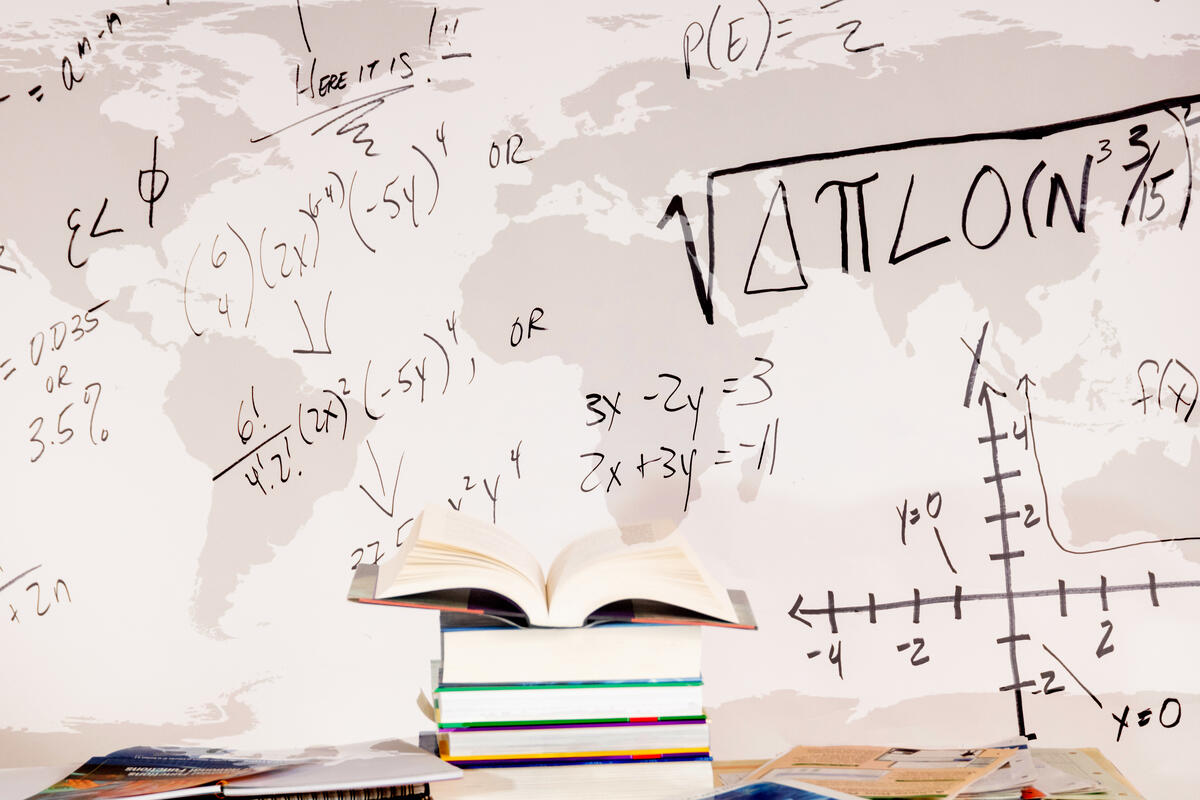It’s fitting that one of the oldest courses in the catalog, taught by UNLV's longest-serving faculty member, is a history course … But you won’t find it in the History Department.
This course, nested in the Department of Mathematical Sciences, teaches a different kind of historical narrative — one that's written in the language of numbers and equations and that influences everything from technology and engineering to music and art.
Taught for over 20 years by Satish Bhatnagar, the History of Mathematics covers the evolution of mathematics over time and its effects on cultures around the world. “Lately, I have been taking a humanistic approach toward the History of Mathematics,” says Bhatnagar.
It’s that holistic approach to both teaching and understanding mathematics that he hopes to impart to his students — many of whom go on to become math teachers.
That way, he says, they’ll develop a broader understanding of the subject and deliver a richer presentation when creating their own curriculum.
How does it work, and why is it being taught?
One component of the course includes a master project that asks students to choose a member of their family (parents, grandparents, great-grandparents, etc.) and interview them about what learning and using mathematics in school was like for them when they were young.
“Through this project, students have a history of their family and of some mathematics,” explains Bhatnagar. The students are then asked to write biweekly reports as they work on the project.
To further aid the projects, Bhatnagar invites guest speakers such as Claytee White, director of the Oral History Research Center, who spoke to students about how to conduct a creditable oral interview with their relatives.
Other speakers included staff from the Writing Center to present on developing writing skills; a mathematician to share their professional journey; and David Schwartz, history professor and ombuds, to speak on the history of gaming and mathematical odds in Las Vegas casinos.
“The bottom line is that if you do not know the history of your subject, your family, your city, or your nation, you are missing out on a lot. The history of mathematics is like a history of everything,” says Bhatnagar.
Who’s taking it?
History of Mathematics is an upper-division math course that is only required for students who are secondary math majors. For others, it can be taken as an elective.
Bhatnagar says, “Students come from computer science and engineering, philosophy, economics — you name it."
What’s something students might be surprised to learn?
The course is very accessible to students in non-math majors because the focus is on the people who created mathematics, conditions which were conducive to mathematics, and places where mathematicians thrived.
“MATH 314 sounds like it’s an upper-division math course, but no mathematical concepts are taught,” says Bhatnagar. “You don’t even need to understand concepts like the quadratic formula!”
What excites instructors the most about teaching this course?
When Bhatnagar first began teaching at UNLV, his focus was on teaching “hardcore” math and some computer science courses. In the 1980s, he taught the history of Vedic mathematics.
“Vedic mathematics is the mathematics that is found in the Vedas, the most ancient scriptures of the Hindus,” says Bhatnagar. “Once I got into the history of mathematics as a subject, it became really my number one passion.”
Bhatnagar has published 13 books in seven different genres: mathematics, philosophy, history, literature, religion, history of math, and education.
“This course is a two-way traffic of ideas: I get ideas from the classroom, and I bring ideas into the classroom. And that is what really keeps me going into my 50th year here,” he says.
What can even lay people know from this course?
“That the facts in mathematics are unchanging, no matter how old they are," says Bhatnagar. "Once something is proved right, mathematicians are never ever going to be disputing it." By contrast, "nothing is carved in stone in history because the facts are under constant consideration and revision.”
Bhatnagar says his approach toward the history of mathematics is to look at it and treat the subject as a subset of history in general.
“But unlike history as a subject,” he says, “You still have to do tangible math every day.”
The reading list:
- Darts on History of Mathematics, Volumes I and II by Satish Bhatnagar
“I actually never thought that I would write such volumes! When I wrote the first book, I did not put the ‘Volume I’ [in the title] because I thought that was the end of it,” jokes Bhatnagar. “But you never know — gradually things kept needing to be added. So volume II is out now, too!”



